By Yanmin
This article is one of a series of lectures on Alibaba Cloud robotic process automation (RPA). It describes in detail how to comprehensively sort customers' business processes to identify key points and perspective issues in existing processes before you develop Alibaba Cloud RPA applications.
To ensure that delivered Alibaba Cloud RPA applications can provide the optimal product experience and implementation services for customers and that RPA implementation and delivery is free of application development problems caused by unclear or non-standard business process sorting, this lecture clearly defines standards and requirements for RPA business process sorting. During the implementation and delivery of Alibaba Cloud RPA projects, main service processing documents include the business process lists (BPLs) and business workflow documents (BWDs).
(1) Unique process name
A customer may use Alibaba Cloud RPA to develop multiple processes. Each process must have a unique name that clearly indicates functions of the process.
(2) Basic process information
The customer must record the basic information of a process in detail and ensure that the Alibaba Cloud RPA delivery personnel clearly understand the role of the process, manpower and resource investment in the process, and the system environment of the process, as shown in the following figure:

The preceding table must be clearly filled in by the customer and confirmed by the Alibaba Cloud RPA delivery personnel so that the delivery personnel fully understand the role of the process and its system environment when they see the customer business processes for the first time.
(3) Current system upgrade plans
If the customer plans to update the system in the near future, the delivery personnel must consider the impact of the system upgrade on the RPA project and judge whether the process is currently suitable for RPA.
(4) Preliminary process feasibility judgment
The process feasibility is judged based on the service logic. After the customer has compiled the BPL, the Alibaba Cloud RPA delivery team must judge the technical or logical feasibility of the project. The final judgment must be made after the BWD is compiled.
(1) Define the process scope
The process scope defines the business boundaries of a process, including but not limited to: business scenarios, monthly manpower investment, monthly service repetitions, flowchart, detailed description of process steps, department in charge of the process, business data volume, touch system environment, association between upstream and downstream processes, start and end points of the processes, and terminology.
(2) Process levels
A business process consists of five levels (L1 to L5), as shown in the following figure:
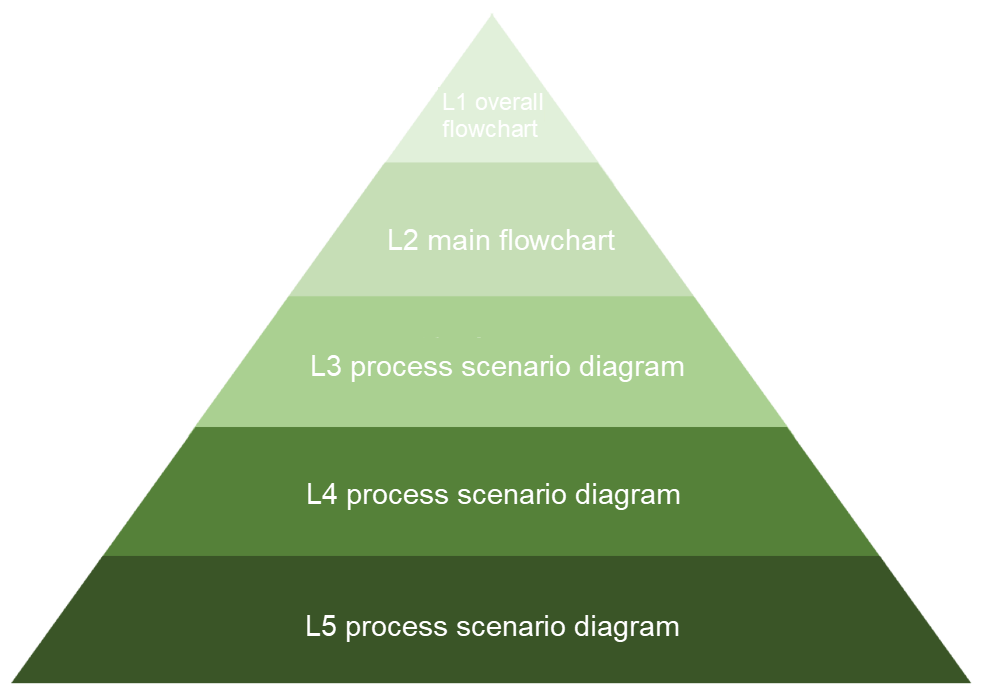
L1: Describes the general functions of the process.
L2: Provides the flowchart based on business units (BUs).
L3: Provides the flowchart at a coarse granularity based on BUs and business scenarios.
L4: Provides the flowchart at a fine granularity for a single step or several steps.
L5: Provides the detailed flowchart for each step.
(3) Requirements for drawing flowcharts
During project implementation, the flowcharts must be clear so that anyone can understand the functions, related business scenarios, and associated attributes of the process. In the current sorting process used by Alibaba Cloud RPA, L3 and L4 flowcharts are mandatory and L1 and L2 flowcharts are optional.
The following is an L3 flowchart:
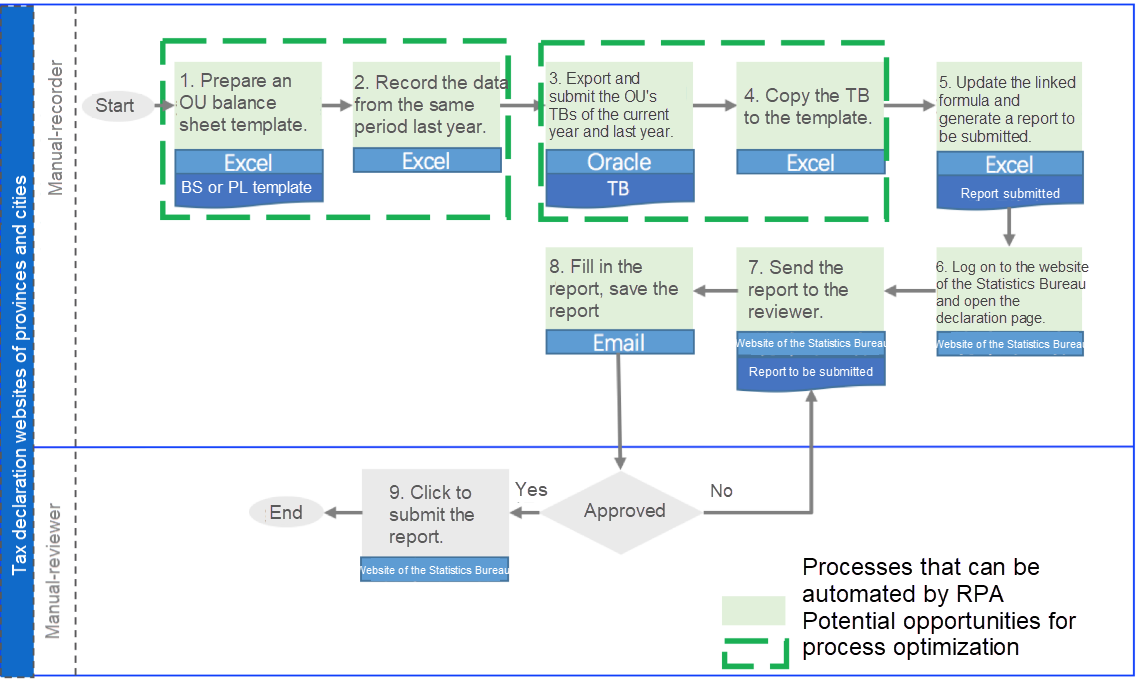
An L3 flowchart only needs to clearly indicate the operation procedures and service points of each module, and does not need to describe each step in detail.
The following is an L4 flowchart:
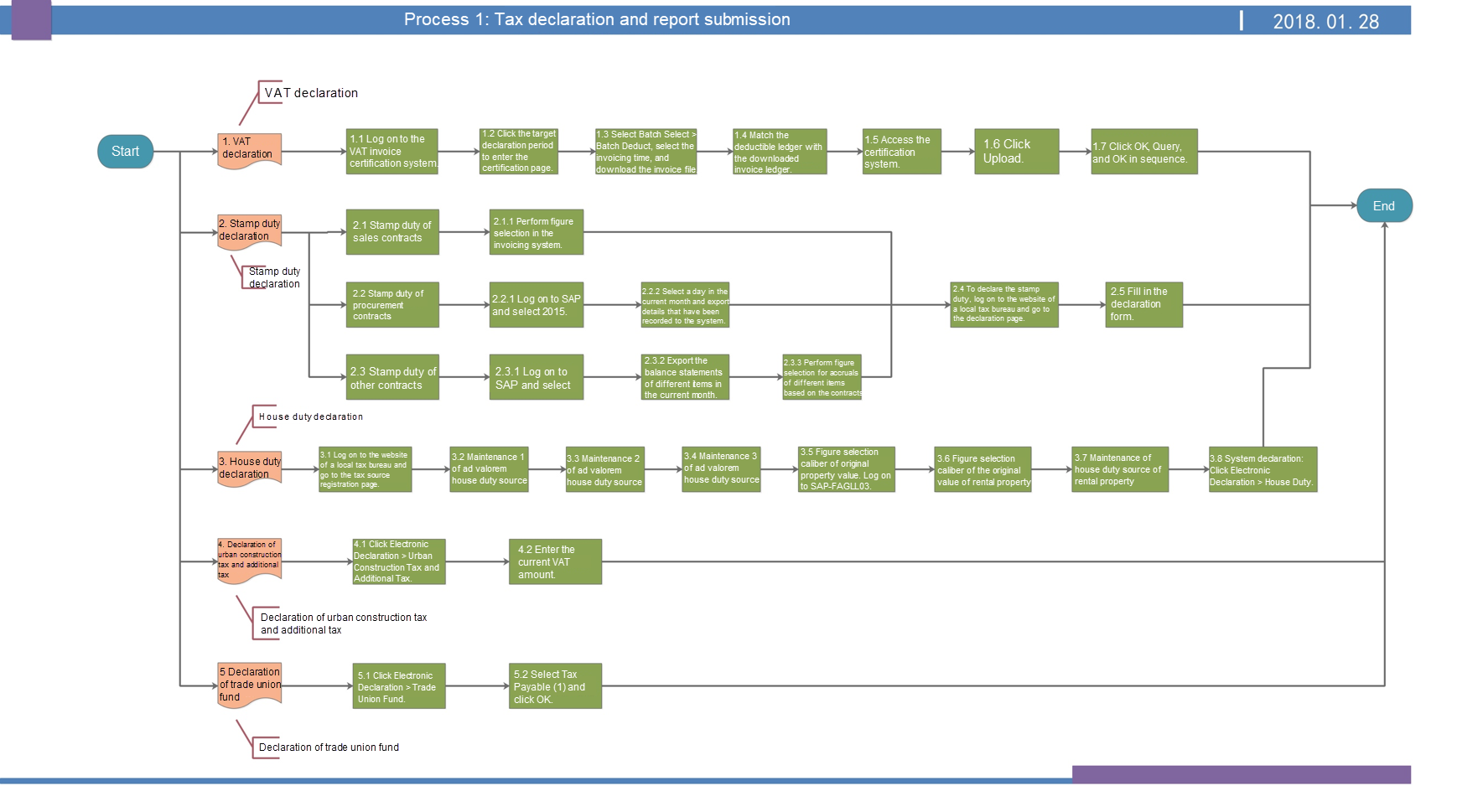
An L4 flowchart must describe each step in the process in detail. Steps must be continuous, without any interruption. In addition, the process branches must be clearly drawn to ensure the integrity of the process logic. Due to space limitations, this lecture does not go into the requirements for process branches.
(4) Common symbols in flowcharts
The following table lists common symbols used in flowcharts. The symbols must be used according to the actual scenario.
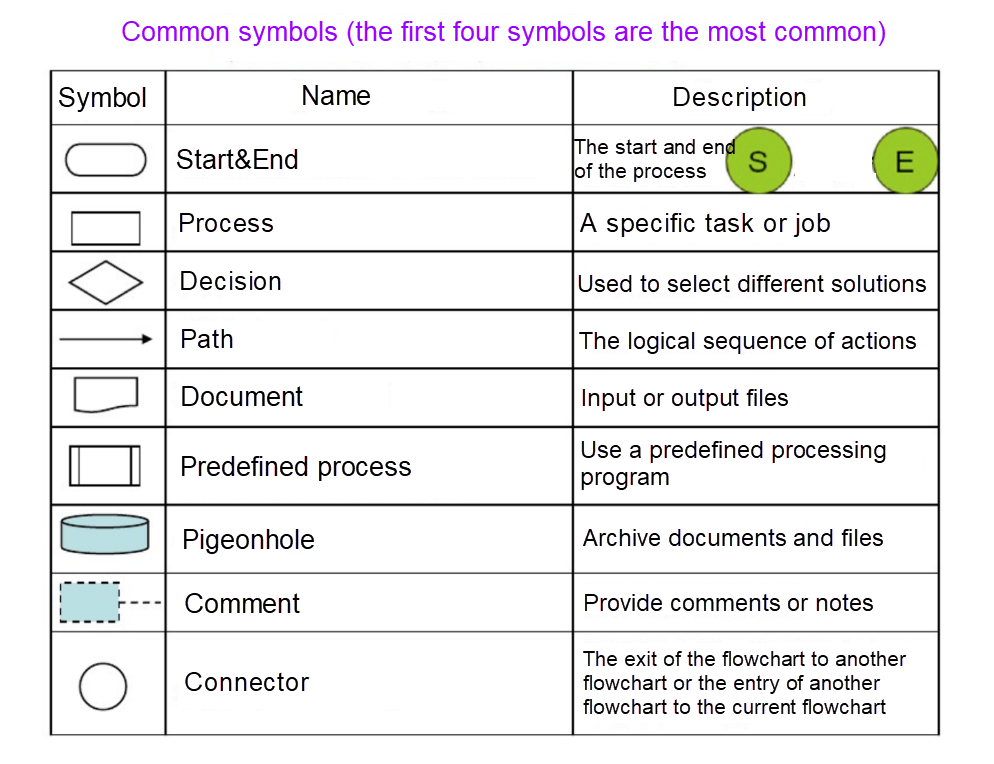
This following figure shows how to compile a BWD:
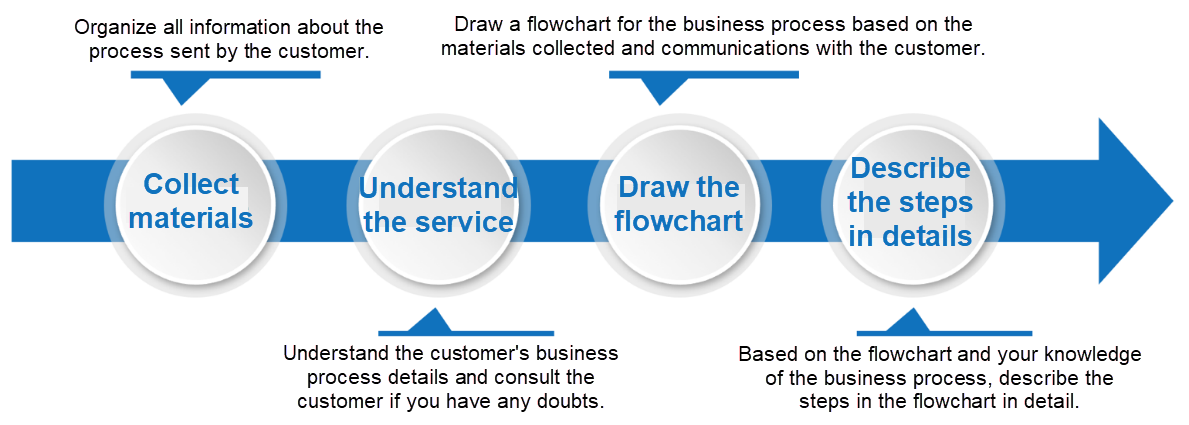
(1) Collect and sort all the materials about the process sent by the customer, including all the Word files, Excel files, video and audio files, PPT files, and brief introductions.
(2) Review the detailed information about the customer's business process, including but not limited to: business scenarios, monthly manpower investment, monthly service repetitions, flowchart, detailed description of process steps, department in charge of the process, service data volume, touch system environment, association between upstream and downstream processes, start and end points of the processes, and terminology.
(3) Draw a L4 flowchart first and discuss and verify the correctness and completeness of the L4 flowchart with the customer's service staff.
(4) Based on the provided BWD template and L4 flowchart, describe each step in detail, illustrate each step with a screenshot, and then confirm the appropriateness, accuracy, and completeness with the customer. The screenshots must be annotated. When multiple screenshots are required for some steps, ensure their continuity.
(5) Confirm the BWD with the customer and submit the confirmed BWD to relevant department heads of the customer, who review and sign off on it.
Note: If you have any doubts when drawing the flowcharts and describing the steps in detail, contact the customer and Alibaba Cloud RPA team. Ensure that the BWD you compiled reflects all the information about the process and provides the most reliable process details for subsequent technical development.
To write a clear and complete BWD, you need to pay attention to the following precautions:
(1) Write the BWD from the perspective of an Alibaba Cloud RPA developer who is reading the BWD. If the developer can clearly sort the processes and understand the service details after reading the BWD and listening to your explanation, your BWD is acceptable. If the developer does not understand the steps, you must revise your BWD.
(2) Write the BWD from the perspective of a robot. Robots perform each action based on explicit steps and rules. In the step description, you must clearly describe the steps, prerequisites, and required information. In this way, robots will know how to perform these steps without missing any step.
(3) Write the BWD from the perspective of a customer. You need to know what the customer wants. The customer wants a robot that can help him execute a process. In each phase of step execution, he wants to know the results output by the robot. Therefore, you must clearly describe the steps (a set of consecutive steps) in each stage. The customer cares more about results than the process. However, robots and developers care more about the process than results.
yanmin - June 25, 2019
yanmin - June 27, 2019
yanmin - June 27, 2019
Rupal_Click2Cloud - November 15, 2023
Clouders - June 17, 2022
Sally - October 29, 2019
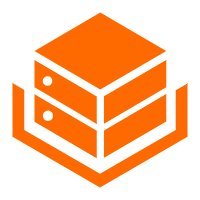 Alibaba Cloud Linux
Alibaba Cloud Linux
Alibaba Cloud Linux is a free-to-use, native operating system that provides a stable, reliable, and high-performance environment for your applications.
Learn More Robotic Process Automation (RPA)
Robotic Process Automation (RPA)
Robotic Process Automation (RPA) allows you to automate repetitive tasks and integrate business rules and decisions into processes.
Learn More Offline Visual Intelligence Software Packages
Offline Visual Intelligence Software Packages
Offline SDKs for visual production, such as image segmentation, video segmentation, and character recognition, based on deep learning technologies developed by Alibaba Cloud.
Learn More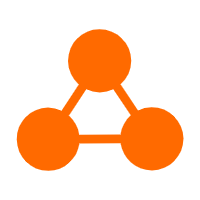 Network Intelligence Service
Network Intelligence Service
Self-service network O&M service that features network status visualization and intelligent diagnostics capabilities
Learn More